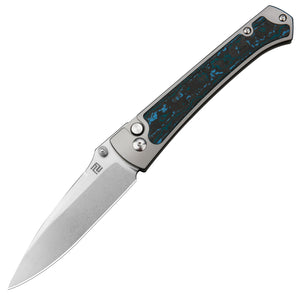Knife flipping, also known as blade flipping or knife spinning, is a captivating skill that combines dexterity, precision, and creativity. It has gained popularity among enthusiasts who enjoy the artistry and thrill of manipulating knives with finesse. In this guide, we will delve into the world of knife flipping, providing beginners with a comprehensive understanding of this captivating art.

The Basics of Knife Flipping
Before diving into the intricacies of knife flipping, it is essential to grasp the fundamentals. The first step is to choose the right knife for flipping. A balisong, also known as a butterfly knife, is a popular choice due to its unique design that allows for smooth flipping and manipulation. However, any folding knife with a sturdy handle and a blade that locks securely can be used for this art form.
Once you have your knife, it's time to learn the basic flipping techniques. The most common moves include the opening and closing of the knife, aerial tricks, and transfers between hands. It is crucial to start with simple moves and gradually progress to more complex maneuvers as you gain confidence and skill.
Mastering Knife Flipping Techniques
Knife flipping is an art that requires practice, patience, and a keen eye for detail. To master the techniques, it is essential to focus on proper grip, hand positioning, and fluid motion. The grip should be firm but not too tight, allowing for a smooth flipping action. Experiment with different hand positions to find what feels most comfortable for you.
One of the key aspects of knife flipping is understanding the concept of balance. Balancing the knife properly is crucial for executing tricks and maneuvers effectively. Practice flipping the knife and pay attention to how it rotates in the air. This will help you develop a sense of timing and control, enabling you to perform more advanced moves.
Ensuring Safety
Knife flipping is an exciting activity, but it is essential to prioritize safety at all times. Always practice in a controlled environment, away from distractions and potential hazards. It is advisable to wear protective gloves to minimize the risk of accidents and injuries. Additionally, be mindful of your surroundings and ensure that there is ample space to perform the flips without endangering yourself or others.
Furthermore, it is crucial to maintain a sharp blade while flipping. A dull blade can be unpredictable and may cause accidents. Regularly inspect your knife for any signs of wear and tear, and sharpen it as needed. Remember to handle the knife with care and respect, treating it as a tool rather than a toy.
Joining the Knife Flipping Community
Knife flipping is not just a solitary pursuit; it is a vibrant community of enthusiasts who share their passion for this art form. Engaging with fellow knife flippers can provide valuable insights, tips, and inspiration. Online forums, social media groups, and local meetups are excellent platforms to connect with like-minded individuals.
Participating in knife flipping competitions can also be a thrilling experience. These events showcase the skills of talented flippers and offer an opportunity to learn from the best. Whether you choose to compete or simply spectate, these gatherings foster a sense of camaraderie and allow you to immerse yourself in the world of knife flipping.
As you embark on your journey of exploring the art of knife flipping, remember that practice is key. With dedication and perseverance, you can develop your own unique style and repertoire of tricks. Embrace the challenges, celebrate the small victories, and always prioritize safety. Happy flipping!




